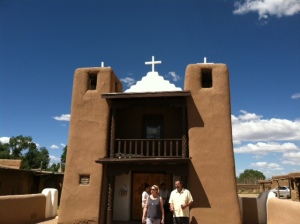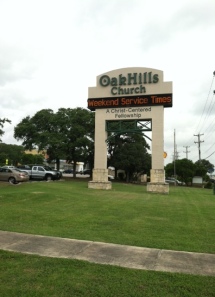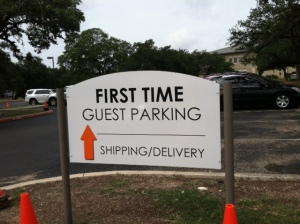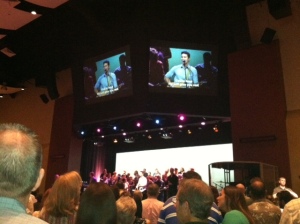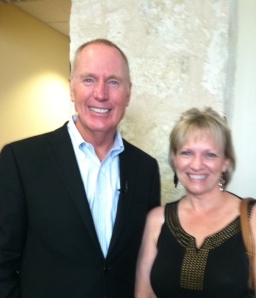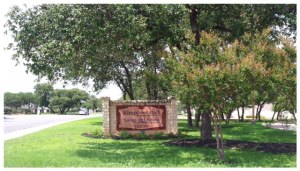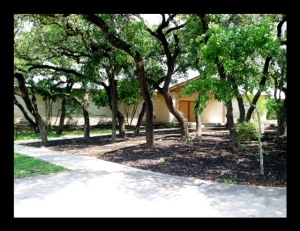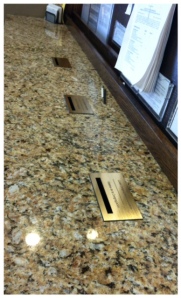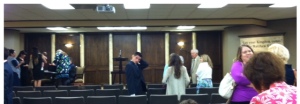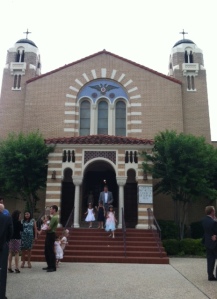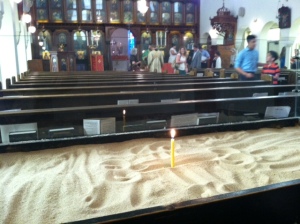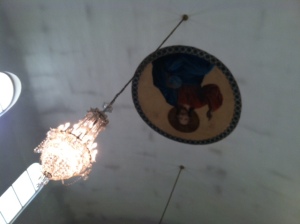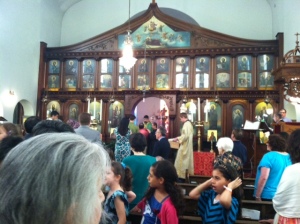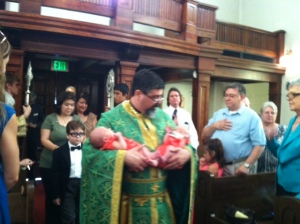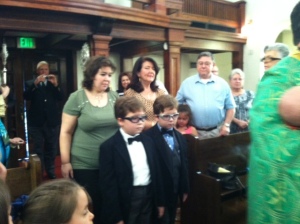#25 – San Geronimo Chapel, 120 Veterans Highway, Taos, NM
Why this Church?
This weekend, I came to Angel Fire, New Mexico with a group of cyclist friends. Being without a car, my ability to get to a church was limited. So, I thought that I’d share my Friday visit to San Geronimo Chapel at Taos Pueblo. Outsiders are not welcomed to native religious ceremonies held once a month in the foothills of the Sangre de Cristo mountains. It’s possible that the Sunday services at the San Geronimo Chapel would have been open to me, but without a car to drive the 20 or so miles to the Taos Pueblo compound, that didn’t seem reasonable either. However, I learned so much on Friday about the Native American Indians of Northern New Mexico and their religious practices, that I thought I’d take this week’s post to relay what I learned. I think it will help others better understand the intersection of Catholicism and Native American religious practices. Also, it will provide more insight into how the Pueblo people integrated their own traditions with the religion forced upon them years ago.
Arrival
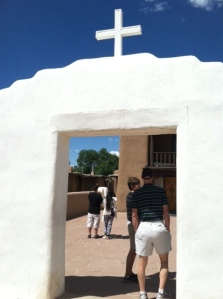 Built in 1850, the San Geronimo Chapel is positioned near the entrance of Taos Pueblo, one of the longest continually inhabited communities in America (1000 years). Archeologists have found evidence that the Native American community was built between 1000 and 1450 A.D. and the people here live much like the early inhabitants, without electricity or modern conveniences.
Built in 1850, the San Geronimo Chapel is positioned near the entrance of Taos Pueblo, one of the longest continually inhabited communities in America (1000 years). Archeologists have found evidence that the Native American community was built between 1000 and 1450 A.D. and the people here live much like the early inhabitants, without electricity or modern conveniences.
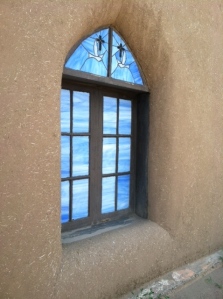 The pueblo itself is an absolute marvel, but for this blog, I’ll focus primarily on the the role religion has played and continues to play in the lives of the Pueblo people.
The pueblo itself is an absolute marvel, but for this blog, I’ll focus primarily on the the role religion has played and continues to play in the lives of the Pueblo people.
The Tour Begins
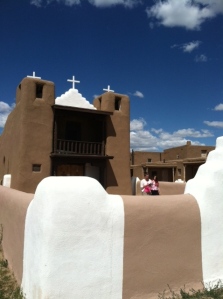 Our tour guide, a young college-aged woman arrived at San Geronimo Chapel for the tour. With long dark hair and dark skin, she was dressed in typical American attire and spoke English to absolute perfection. She relayed some history about the Pueblo people and the Tiwa language — a language that is passed down verbally from one generation to the next but remains unwritten and unrecorded to this day.
Our tour guide, a young college-aged woman arrived at San Geronimo Chapel for the tour. With long dark hair and dark skin, she was dressed in typical American attire and spoke English to absolute perfection. She relayed some history about the Pueblo people and the Tiwa language — a language that is passed down verbally from one generation to the next but remains unwritten and unrecorded to this day.
The tour guide also shared that Francisco Vasquez de Coronado sent Captain Hernando de Alvarado and a detachment of some 20 soldiers to explore Northern New Mexico in 1540. It appears that these were the first Europeans to see the Pueblo Indians.
The colonial governor of present-day Mexico came to Taos in July, 1598 and in September of that year, he assigned Fray Francisco de Zamora to serve the Taos and Picuris Pueblo Indians. Around 1619, the first Spanish-Franciscan mission called San Geronimo de Taos was built by the priests and forced Indian labor.
The area’s abundant water, timber, game and established trading networks attracted early Spanish settlers to the area in droves. But, these new inhabitants, known for their authoritarian ways and forced religion, created conflict with the Taos Pueblo. The friars undertook intense efforts to convert the Pueblo to Catholicism.
This conflict created the Pueblo Revolt of 1680 — a coordinated attack on some Spanish settlements by several Pueblo communities. During that attack, more than 8,000 Pueblo warriors killed 21 Franciscan friars, more than 400 Spaniards and drove about 1,000 settlers out of the area. During this uprising the San Geronimo church was destroyed.
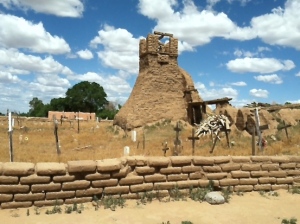 Our tour guide explained the events leading up to this revolt; her carefully chosen words etched with the deep resentment felt by past and present Pueblo Indians. Unfortunately, the San Geronimo church was destroyed and all that remains today is the bell tower. That crumbling structure is surrounded by the unkept burial ground where her ancestors are buried and their graves marked by rough wooden crosses.
Our tour guide explained the events leading up to this revolt; her carefully chosen words etched with the deep resentment felt by past and present Pueblo Indians. Unfortunately, the San Geronimo church was destroyed and all that remains today is the bell tower. That crumbling structure is surrounded by the unkept burial ground where her ancestors are buried and their graves marked by rough wooden crosses.
In 1692, Don Diego de Vargas successfully made a military reconquest and re-colonized the area. Two years later, De Vargas raided the Taos Pueblo when the Indians refused to give corn to the starving settlers in Santa Fe. Two years after that, the Taos Pueblo revolted again in 1696. De Vargas came to put the rebellion down for a third time. Ten years later, the San Geronimo Mission was rebuilt.
The tour guide said things settled down for about 140 years, but the area would see conflict again in the Mexican-American War, when U.S. General Stephen Kearney occupied the New Mexico province in 1846. The very next year, the Indians rebelled against the new wave of invaders and killed Governor Charles Bent in his Taos home. U.S. troops retaliated and killed about 150 Indians, demolished the San Geronimo Mission and then executed 16 Indians for their part in the revolt. The church was finally rebuilt for the last time in 1850.
Hiding Native Values in Plain Sight
Oddly enough, just one week before I visited this area, I listened to “The Spontaneous Healing of Belief” by author Gregg Braden. In the audio book, Braden shared his thoughts about the best way to hide something — in plain sight. To illustrate, he used an example from the Pueblo people who had to adopt Western religion just to survive. However, rather than completely abandoning their spiritual systems, the Pueblo practiced syncretism — incorporating new customs alongside traditional beliefs.
He explained how the Indians, who historically relied on agriculture, honored nature by dressing mother Mary in white for Winter, blue for Spring, pink for summer and coral/orange for autumn.
As I walked into the San Geronimo Chapel, I specifically looked for this outward sign of the Native Indian religious beliefs and sure enough there was Mary robed in pink. Outsiders are asked to refrain from photographs within the church, so I didn’t take any, but a quick Google search can unearth a few, if you’d like to check it out. In the photos, you won’t find Jesus front and center, but instead Mother Mary who takes prominence at the altar. This, I understand is how the Pueblos honor Mother Earth, as Virgin Mary. You also don’t have to look too far to find Father Sun — an image that peeks out from behind the robe of one of the Saints on the wall.
Spirituality of the Pueblos
With an emphasis of interconnectedness and harmony with all, the Pueblos integrate their spirituality throughout their lives. In fact, their way of life is their religion. Sacred ceremonies are held frequently, and typically take place in underground areas called kivas found within the mountains. Religious ceremonies occur so often that our tour guide shared that the religious ceremonial responsibilities of the males (it is a patriarchal society) often cause conflict with some employers, who find it difficult to accommodate the Pueblos’ request of time off for religious reasons.
During one part of the tour when learning about how the Indians use the horno to bake bread, I asked if there was anything the Pueblo people were not allowed to eat. She said, “We eat pretty much everything except snakes.” When I asked why she said, “Snakes are not of this world.” I let that one go, but I remain curious to learn more about that statement and belief. I can’t find anything online that provides more insight around that idea, although one reference indicated that many Native American Indians believe snakes are a intermediary between the upper and lower worlds.
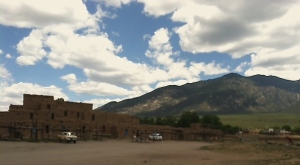 At the end of our tour, I asked one final question: “What is your favorite religious ceremony and why?” As she answered, we all witnessed her deep felt emotion as she shared her feelings about their tribes’ pilgrimage to Blue Lake — a sacred area in the mountains. She said the pilgrimage takes about three days and the tribe will leave behind all electronic devices, dress in native attire and don animal skin boots. She said it is a special time that allows them to be with family and extended family and remains a bonding time that is hard to describe.
At the end of our tour, I asked one final question: “What is your favorite religious ceremony and why?” As she answered, we all witnessed her deep felt emotion as she shared her feelings about their tribes’ pilgrimage to Blue Lake — a sacred area in the mountains. She said the pilgrimage takes about three days and the tribe will leave behind all electronic devices, dress in native attire and don animal skin boots. She said it is a special time that allows them to be with family and extended family and remains a bonding time that is hard to describe.
Post Pueblo Indian Wrap Up
What struck me most about this trip and visit to San Geronimo Chapel is how unfair it is to impose religious beliefs on others. Throughout the ages, we have seen how religious leaders and nations have marched into areas trying to convert the locals to their specific religious belief and traditions. I will never understand what compels some to impose their religious values upon others. Exposing people to who you are and why you believe the way you do is all that is needed to help people understand your way of worshipping God and then it is up to them to accept or reject another’s ideas. Why do we feel so threatened by the way others worship God/Allah/Jehovah/Oneness/Universal Intelligence or any other name we choose to use for the higher power in which we believe?
What’s Next?
From New Mexico, I will head back to San Antonio and then on to Atlanta, Georgia. There, I’ll have the opportunity to worship with my daughters in the church that my college-aged daughter attends. It will be a special time wherever it is, because I will be with them once again.
